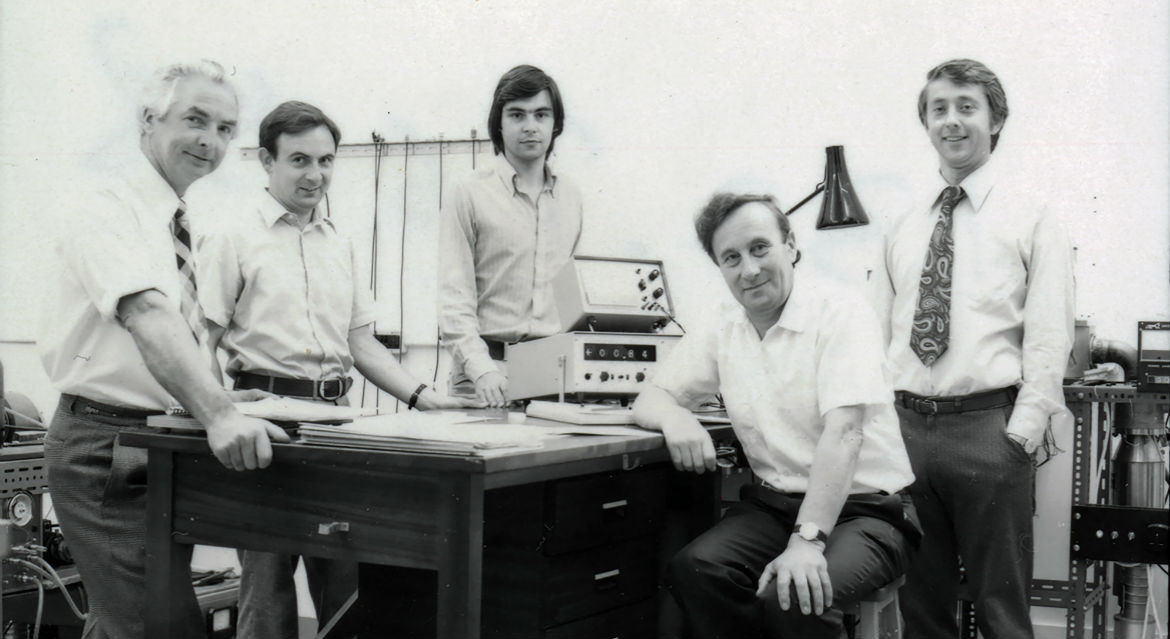Celebrating Dundee’s flat screen innovators
Published On Wed 4 Apr 2018 by Roddy Isles

Their work directly led to the world of flat screens and smartphones we live in today. Now the pioneering work carried out by Professors Walter Spear and Peter LeComber at the University of Dundee in the 1970s and 1980s is to be recognised this week by the US-based Institute of Electronic and Electrical Engineering (IEEE), the largest technical professional organisation in the world.
A milestone plaque will be unveiled on Thursday 5 April at the university laboratories where Spear and LeComber carried out their experiments. The ceremony will be attended by visitors from around the globe.
“The work of Spear and LeComber has had a profound impact on the world,” said Professor Iain Stewart, Dean of the School of Science and Engineering at the University of Dundee.
“The innovations they made included the creation of the amorphous silicon thin film transistor which led directly to the development of Liquid Crystal Display technology. This allowed the development of the technology which we use on a daily basis around the world in flat screen televisions and mobile devices.
“Theirs was some of the most impactful work produced at a UK university and this international recognition is well deserved.”
Walter Spear arrived at Dundee in 1969 as Harris Professor of Physics, having previously worked at the University of Leicester. He was joined in Dundee by his former student Peter LeComber, and the two formed a research partnership that was soon to have a huge impact.
Their research into the transport properties of low charge mobility crystalline and disordered solids led to investigate the properties of amorphous silicon. There work took them to the cutting edge of developments in semiconductors and transistors, but initially the work was very much curiosity driven.
Fascinated by the potential of materials like solidified rare gases, sulphur and selenium to act as conductors for electrical charge, their attention was drawn to thin film amorphous silicon. They and their students developed new techniques that were summarised in a breakthrough scientific paper in 1975, where they demonstrated that dramatic changes in conductivity of amorphous silicon were possible.
This started a revolution in the field of amorphous semiconductor research by making inexpensive silicon based thin film electronic devices possible. Companies and groups across the world started studying the material.
They followed that with another world first when the amorphous silicon thin film transistor was announced. This device, found in virtually every notebook display and mobile phone screen in the world, forms the basis of the multibillion dollar market in flat panel displays.
Their significant contribution to this field led to Spear receiving the European Physical Society Europhysics prize in 1976 and the Max Born Medal and Prize for Physics in 1977. Impressively, LeComber published over 170 papers and co-invented 10 patents.
Their remarkable working relationship only came to an end following LeComber’s untimely death in 1992. The legacy of their ground breaking research is evident in the advances in technology that revolutionised the way we live today.
IEEE, an association dedicated to advancing innovation and technological excellence for the benefit of humanity, is the world’s largest technical professional society. It is designed to serve professionals involved in all aspects of the electrical, electronic, and computing fields and related areas of science and technology that underlie modern civilization.
For media enquiries contact:
Roddy Isles
Head of Corporate Communications
University of Dundee
Nethergate, Dundee, DD1 4HN
Tel: +44 (0)1382 384910
Mobile: 07800 581902
Email: r.isles@dundee.ac.uk